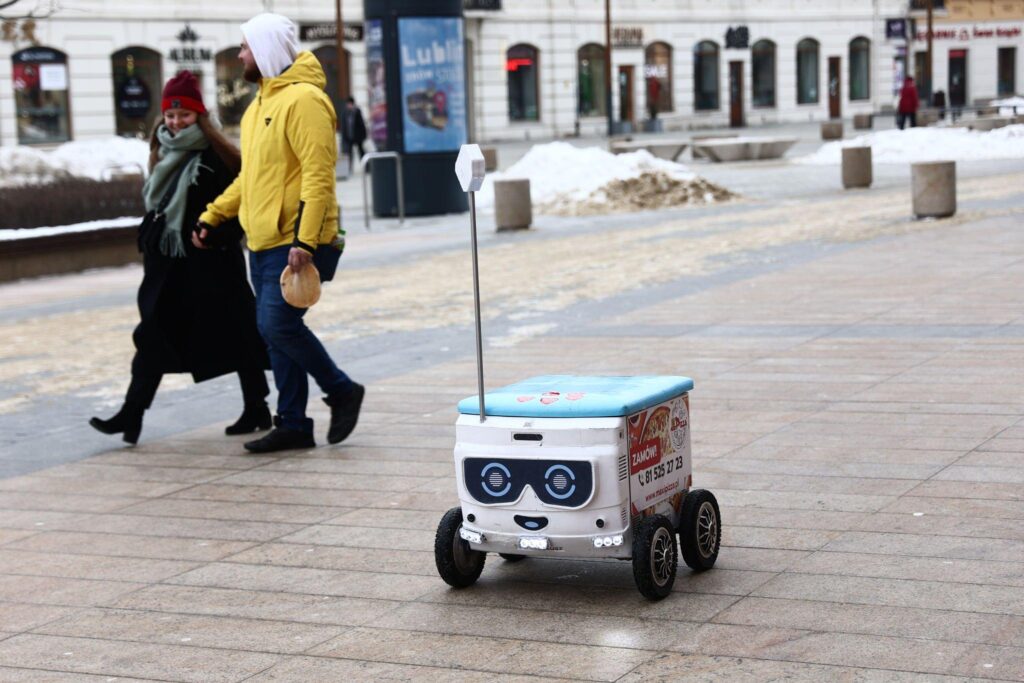Exploring Best Food Delivery Robots Revolutionizing the Dining
In recent years, technology has seamlessly integrated itself into our daily lives, impacting various industries, including the food sector. One of the most intriguing advancements is the emergence of food delivery robots. These autonomous wonders are transforming the way we order, receive, and even enjoy our favorite meals. In this article, we’ll delve into the world of food delivery robots, exploring their functions, benefits, and the potential they hold for the future.
Table of Contents
Introduction
Food delivery has come a long way from the days of a simple phone call to your local pizzeria. With the advent of smartphones and the internet, ordering food online has become commonplace. However, the introduction of food delivery robots takes this convenience to an entirely new level.
The Rise of Food Delivery Robots
The idea of using robots for food delivery may sound like science fiction, but it’s a reality in many places around the world. Companies such as Starship Technologies and Nuro have pioneered this technology, deploying fleets of autonomous robots to deliver meals, groceries, and even pharmaceuticals.
How Do Food Delivery Robots Work?

Food delivery robots rely on a combination of technologies, including GPS, sensors, and artificial intelligence. These robots are equipped with compartments to securely store food and beverages. When an order is placed, the robot navigates itself to the restaurant, picks up the order, and delivers it to the customer’s doorstep.
Benefits of Food Delivery Robot
4.1 Convenience
One of the primary benefits of food delivery robots is the unparalleled convenience they offer. Customers can place orders from the comfort of their homes and receive their meals within minutes, all without human interaction.
4.2 Cost-Efficiency
Food delivery robots have the potential to reduce delivery costs for restaurants. They operate 24/7 without the need for wages or benefits, making them a cost-effective alternative to human delivery drivers.
4.3 Safety
In the age of social distancing, food delivery robot have become a safer option for both customers and restaurant staff. They minimize contact and reduce the risk of transmitting illnesses.
Challenges and Concerns

While food delivery robots hold promise, they also face significant challenges and concerns.
5.1 Technical Limitations
Food delivery robot are not immune to technical glitches and limitations. They may struggle to navigate complex terrains or adverse weather conditions.
5.2 Job Displacement
The widespread adoption of these robots raises concerns about the potential displacement of human delivery drivers, leading to job losses in the industry.
5.3 Regulatory Hurdles
The regulatory landscape surrounding food delivery robots is still evolving. Questions about liability, safety standards, and road usage need to be addressed.
Current Players in the Market
Several companies are actively participating in the food delivery robot market, each with its unique approach and technology.
Future Prospects
The future of food delivery robot looks promising, with ongoing advancements in robotics and artificial intelligence.
Impact on Restaurants and Consumers
Food delivery robots are changing the way restaurants operate and how consumers experience dining.
The Human Touch vs. Robot Efficiency

As robots become more involved in food delivery, the debate between the human touch and robot efficiency intensifies.
Are Food Delivery Robot Environmentally Friendly?
An examination of the environmental impact of food delivery robot and their potential to reduce carbon emissions.
Security and Privacy Concerns
Exploring potential security risks and privacy concerns associated with autonomous robots delivering food.
Ethical Considerations
The ethical dilemmas surrounding the use of robots in the food delivery industry.
The Global Adoption of Food Delivery Robot
A look at how different countries are embracing or regulating food delivery robot.
Conclusion
In conclusion, food delivery robots have emerged as a disruptive force in the culinary world. They offer convenience, cost-efficiency, and safety, but also raise challenges and ethical concerns. As technology continues to advance, their role in our daily lives will undoubtedly expand.
(FAQs)
Are food delivery robot available in my city?
The availability of food delivery robot varies by location. Check with your local restaurants or delivery services to see if they offer this option.
How do food delivery robots ensure the safety of my food?
Food delivery robots are equipped with secure compartments and temperature controls to ensure the safety and quality of your meals during transit.
Can food delivery robot replace human delivery drivers entirely?
While food delivery robot are becoming more prevalent, it’s unlikely that they will completely replace human delivery drivers, at least in the near future.
Are food delivery robots environmentally friendly?
Food delivery robots have the potential to reduce carbon emissions compared to traditional delivery methods, making them a more environmentally friendly option.
What regulations govern the use of food delivery robot?
The regulations surrounding food delivery robot vary by region and are still evolving. Remaining well-informed regarding regional regulations and directives is of utmost importance.
Get Access Now : Agricultural Robots Revolutionizing Best Farming with Automation
Food delivery robots are at the forefront of a technological revolution in the food industry. While they bring exciting possibilities, their integration also prompts us to consider the broader implications on our society, workforce, and the way we experience meals.

